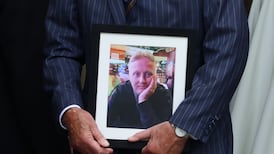Dublin city centre will have a much heavier street policing presence in the future, with more Garda CCTV cameras, after a decision to extend a high-visibility frontline operation which began in the weeks before Christmas.
Though Operation Citizen was deemed a success, assaults causing harm still increased in Dublin as most other crime types fell.
In a bid to shore up order and help to increase a sense of public safety in central Dublin, the Garda has decided to extend its CCTV system in the south city centre. Garda sources said the new cameras would also result in more assaults being recorded on high-quality cameras so that attackers could be identified and brought to justice.
A number of the cameras connected to Garda control rooms are being installed at the scene of very high-profile incidents last year. This includes South William Street, where serious disturbances occurred during lockdown, and around Grattan Bridge where taekwondo Olympian Jack Woolley was seriously assaulted last August while he was socialising after returning from the Tokyo Games.
Senior Garda officers ordered a review of CCTV systems in the Garda's B district, in south central Dublin covered by Pearse Street Garda station, and now nine locations have been selected for attention. The new cameras will be erected in locations with high footfall and/or anti-social behaviour including: Temple Bar, George's Street-Dame Street, Charlemont Mall-Charlemont Street, South William Street-Castlemarket and Parliament Street-Grattan Bridge.
Maintain order
While work is undertaken to install the new cameras, Operation Citizen in north and south central Dublin has been extended beyond its initial two-month period to the end of 2021. That operation aimed to maintain order and offer reassurance to residents in central Dublin and people out socialising by deploying extra shifts of gardaí on to the streets between Thursday and Sunday.
Extra patrols were deployed, with uniform gardaí on foot taking up positions in the middle of the afternoon around areas such as Temple Bar, Dame Street, Camden Street, the Liffey Boardwalk and the wider north and south quays area. The operation is designed to ensure gardaí on foot are already in position in those areas as people arrive into the city centre to start socialising.
It is intended a sense of control and order will already be in place before a busy night begins and trouble-makers will be deterred as a result. Garda patrols then continue until the early hours of each morning, until after pubs and nightclubs have closed and most people have left the city centre.
The decision by Garda Assistant Commissioner Anne Marie Cagney, who is in charge of policing in Dublin, to extend that operation followed a review of its success. It means Dublin city now has a much heavier policing presence than before, though senior officers stressed it was intended to reassure the public and would not be overzealous or intrusive.
A report on policing in Dublin last year prepared by the assistant commissioner for Dublin City Council, shows a reduction in most crime types in the city and county last year. However, Garda sources told The Irish Times there were already some signs crime was rebounding now that society had reopened.
The report by the assistant commissioner shows assaults causing serious harm increased marginally, by 2 per cent. Robberies of businesses also rose – by 5 per cent – and domestic violence crimes recorded by the Garda increased by 6 per cent.
Car thefts were up by 14 per cent but burglary was down by 30 per cent last year. The number of drug-dealing offences recorded declined by 22 per cent, while public order offences were down by 11 per cent across Dublin.
It has also emerged that gardaí in Dublin seized drugs valued at €25.1 million last year as well as €6.7 million in cash and 829 firearms, all from organised crime suspects.









